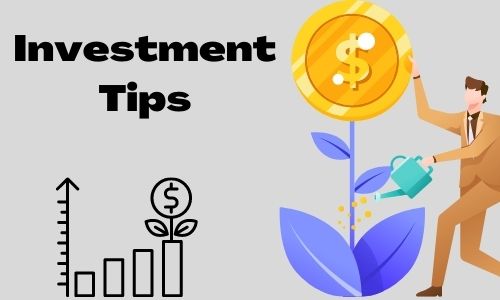SME IPO refers to small and medium-sized enterprises’ initial public offering. It was launched in 2012 by the Indian Stock Exchange and SEBI to help small and medium-sized businesses raise funds. The National Stock Exchange (NSE) SME platform is EMERGE, and the Bombay Stock Exchange (BSE) SME platform is BSE SME. You can invest in it using any of the online stock broking platforms. But the question raises what SME IPO is, whether it benefits you, how it’s different from general IPO, and whether it’s safe or not. In this blog, we have talked all about SME IPOs.
What is an SME IPO?
SME IPO is a process through which small and medium-sized companies go public to generate funds. A company with a minimum net worth and profit of 5 crores in 2 years out of 3 consecutive years or a minimum net worth and profit of 25 crores in 3 years out of any 5 years is eligible for SME IPO (Small and Medium-sized Enterprises Initial Public offering). Investors, traders and individuals can invest in SME IPO by purchasing equity like they do for a general IPO.
Difference between SME IPO and Main Board IPO
SME IPOs and Main Board IPOs allow companies to go public and investors to buy equity in them. Both help the companies in generating funds. However, both of them include specific differences.
- SME IPO is for companies with a maximum capital of Rs. 25 crore, and the mainboard IPO is for companies with a minimum capital of 60 crore.
- The companies that get listed for SME IPO can be not well-known. Whereas companies listed in IPOs used to be popular.
- IPOs launched by large enterprises are more trustworthy than those projected by SMEs.
- Growth in IPOs can reflect immediately.
- Gaining profit in SMEs can be a long-term investment.
- SME shares get traded in lots. Meanwhile, in an IPO, the shares get sold in numbers.
Advantages of Investing in SME IPO
1. High Growth Potential
Since SMEs are small enterprises, they hold an excellent opportunity to grow and cover the market. With SME IPO, companies get recognised, generate funds and become valuable. SME allows the company to grow. Now that the company grows, the value of your purchase stock grows. In 2023, 26 SME IPOs gave 100% returns after listing.
2. Diversification of Your Investment
With the investment in SME IPOs you can diversify your investment with many companies. With the investment in an SME IPO, you can mitigate the stock market risk by diversifying your investment among different companies and industries.
3. Multiple Investment Opportunity
You can find different companies of various industries listed in SME IPOs. It allows you to invest in multiple companies, industries, and potential brands. With an SME IPO, you will have more investment alternatives.
4. Support to Business
With SME IPO, you can offer help to businesses. Investing your money in them can create a positive environment for the companies. However, invest in such SME IPOs where you find potential to grow.
5. Competitive rate
The equity price for SMEs is low when compared to the mainline IPO. It means that you can create capital with lower investment in SME IPO. The companies set the minimum investment amount in the SME IPO. The maximum investment amount in the SME IPO is fixed to Rs. 5 Lakh.
Disadvantages of Investing in SME IPO
1. High Risk
The investment with SMEs comes with high earning potential. It holds equal risk. There can be chances that the IPO launched by an SME doesn’t work in the market and fails to raise funds, resulting in a loss of your investment. Moreover, SMEs are highly affected by market volatility, making it highly risky to invest.
2. Lot’s of research required before investing
Small and medium enterprises are less known, making them less credible. You must research from scratch to learn about past performance and future business predictions. You must consider products/services, their upcoming trends, target audience and more before making the investment decision.
3. Limited disclosure
Since the company is less known, there can be less information about it. The limited disclosure about SME IPO can impact your investment decision.
4. Lack of liquidity
Liquidity refers to how smoothly you can sell and buy stocks without changing prices. SME IPOs include a lack of liquidity, which means sometimes it can be challenging to sell the stocks when you want to, and this may result in a loss to you.
Should You Invest in an SME IPO?
Now that you know the advantages and disadvantages of investing in an SME IPO, you might think about whether or not you should invest in it. It answers that it depends on several factors such as:
1. Your risk bearing appetite
Investing in SME IPO is associated with high risk. You must consider your risk bearing capacity before investing in SME IPOs.
2. Potential of the Company
You can look at which kind of company listed for the SME IPO. Does the company have a futuristic approach? Whether it solves any problem for its end user or not. Decide by collecting information from different sources, research papers, etc., to invest in SMEs’ stocks.
3. Finance Management Skills
If you want to diversify the fund, SME IPO can be a better option. However, to do it effectively, your finance management skills are crucial.
Investment with SME IPO allows you to build capital by buying stocks in lots. It will help you grow exponentially if the company performs well in the upcoming future. Moreover, through it, you will positively impact the business environment. Your small investment can be a hope for a company to raise funds and grow.
How to Invest in SME IPO
If you’ve decided to invest in SME IPOs, you can follow the below-mentioned s
1. Find an Online Trading Platform
There’re several online trading platforms. You can analyse different platforms and select an online trading platform for your investment based on brokerage charges, authorisation, and convenience.
2. Sign in/Sign Up
Download your preferred stock trading app and sign in using your user Id and password/pin. However, if you’re new to the platform and investing in stocks for the first time, you must sign up.
3. Open Demat Account
Once you sign up, proceed to open your demat account. You’ll need to fill out the Demat account opening form, do the KYC verification and submit certain documents. Some essential documents to open a demat account are:
- Bank Account & Cancelled Cheque
- Proof of Address
- Proof of Identity
- Pan Card
- Photograph
- E-sign
- IT return or payslip (optional)
4. Wait for verification
Once you create a demat account, you’ll need to wait to get it approved. Verifying the demat account can happen in a few hours to 48 hours.
5. Check for SME IPOs
On the online trading platform, you can check different SME IPOs listed. You can look at the current and upcoming IPOs.
6. Research about the listed SME IPOs
Once you check the SME IPOs. Study about the company, its current status, and future potential. You can also study the closed SME IPOs to identify their risk and profit factors.
Best Industry for the Investment in SME IPO
Technology-based Product Manufacturing Company
If you’re considering investing with SME IPOs, a technology-based product manufacturing company can be the best option. It has been seen that small and medium-sized companies that manufacture technology products close at higher rates than their issue price. Examples are Australian Premium Solar (India) Limited- SME IPO, Akanksha Power and Infrastructure Limited – SME IPO, and Supreme Power Equipment Limited – SME IPO.
Service-based company
Another industry that is booming is service-based. They act as a bridge between producers and customers. These companies solve the problem of users, holding a great future. These kinds of company’s SME IPOs also succeed in the market. Examples are Maxposure Limited- SME IPO, Konstelec Engineers Limited – SME IPO, Kay Cee Energy & Infra Limited – SME IPO, Trident Techlabs Limited – SME IPO etc.
Ed-tech company
The field of education is emerging with technology, creating a great opportunity. SMEs launched by ed-tech service companies are also booming, increasing high potential—for example, Addictive Learning Technology Limited (Lawsikho)- SME IPO.
Healthcare industry
Healthcare is such an industry that it is an integral part. Companies/organisations associated with this industry have great opportunities, allowing you to invest in SME IPO without worry—for example, Medi Assist Healthcare Services Limited.
E-commerce Platform
The way people are shifting to online instant delivery, e-commerce platforms create a huge opportunity. You can consider investing in it. Such an e-commerce platform involved in selling goods and services is Kaushalya Logistics Limited; its SME IPO closed at a higher rate than its issue price.
Conclusion
SME IPO is an opportunity for businesses to collect funds. At the same time, it’s an opportunity for investors and traders to diversify their investment in the stock market and expect higher returns with the company’s growth. Investing in an SME can be a good decision if you consider your financial condition and risk-bearing capacity, do proper market research, and select the right company to invest in.





